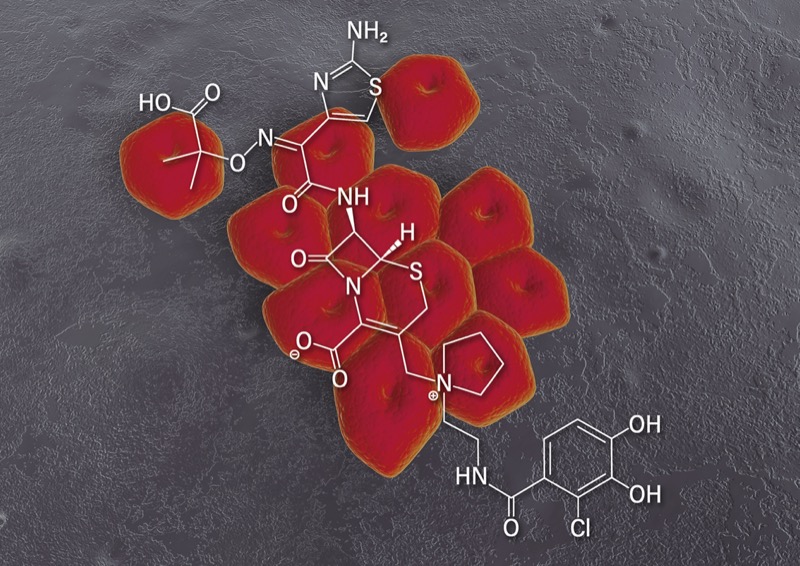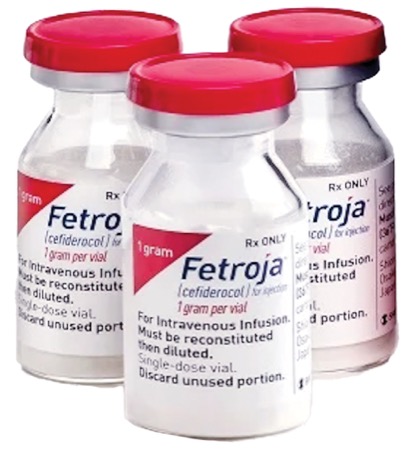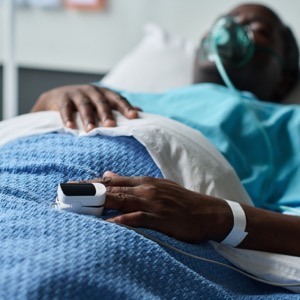Cefiderocol (Fetroja, Shionogi), a catechol-substituted siderophore-conjugated cephalosporin, may be a game changer for treating resistant Acinetobacter in patients with limited or no alternative treatments, according to researchers. But there are still caveats about its use, others said.
In what has been compared to a Trojan horse, sideromycins bind to extracellular free iron, which are essential for bacteria to grow, replicate and metabolize. This allows them to exploit iron transport channels to penetrate the bacteria.
This mechanism confers cefiderocol “with broad activity against gram-negative bacteria, including multidrug-resistant organisms,” according to Rodrigo E. Mendes, PhD, the director of molecular and microbiology at JMI Laboratories, a drug surveillance center in North Liberty, Iowa.
Dr. Mendes and his colleagues investigated cefiderocol activity against carbapenem-resistant Acinetobacter baumannii-calcoaceticus complex. The samples had been cultured from patients in hospitals in 16 European countries, Israel and Turkey between 2020 and 2022.
Of the 1,504 isolates, 996 (66.2%) were non-susceptible to carbapenems, according to a presentation at the 2024 Annual ESCMID Global meeting in Barcelona, Spain (abstract E0452). Of those, 992 carried carbapenemases.
“Cefiderocol (94.4–97.6% susceptible) required a MIC50 [minimum inhibitory concentration for 50% efficacy] of 0.25 mg/L and MIC90 of 1 mg/L against all isolates in the carbapenem non-susceptible subset. Comparator agents yielded susceptibilities of less than 85.5%,” the authors reported.
Cefiderocol demonstrated significant in vitro activity with a MIC50 of 0.12 mg/L and a MIC90 of 1 mg/L against the A. baumannii carrying carbapenemases (94.5%-96.6% susceptible). The activity against these isolates from comparator agents, including ampicillin-sulbactam, imipenem-relebactam, meropenem and others, was limited (<79% susceptible).
The researchers noted that cefiderocol retained its antimicrobial activity against isolates showing various resistance genotypes. However, its efficacy was decreased significantly against those of the organisms carrying blaOXA-23 and blaOXA-72 or blaNDM-1 (MIC90, 8-16 mg/L) with susceptibilities of 38.5% to 81.0%.
These in vitro data suggest that cefiderocol is an important option for the treatment of infections caused by multidrug-resistant pathogens, according to Dr. Mendes.
Dr. Mendes presented data from a second study (abstract E0453) in which the researchers investigated whether carbapenem non-susceptible Pseudomonas aeruginosa were susceptible to cefiderocol.
The researchers identified 996 of 3,926 (25.4%) P. aeruginosa isolates as non-carbapenems; 116 (11.6%) were found to carry carbapenemases.
Cefiderocol and beta-lactam/beta-lactamase inhibitor (BL/BLI) agents had susceptibilities of more than 90% against all P. aeruginosa. Cefiderocol had a MIC50 and MIC90 of 0.12 and 0.5 mg/L, respectively, and susceptibilities between 98.2% and 99.2% against both carbapenem non-susceptible isolates and the carbapenemase-negative subset. In contrast, BL-BLI yielded susceptibilities ranging from 62.9% to 84.2%, the authors explained in the abstract.
“These in vitro data suggest that cefiderocol is an important option for the treatment of infections caused by these resistant pathogens,” Dr. Mendes concluded.
Cefiderocol May Have Broad Implications
Although Dr. Mendes and his colleagues presented promising data about cefiderocol, other presenters went so far as to suggest the drug will change practice. Banu Bayraktar, MD, PhD, the head of medical microbiology at Sisli Etfal Training and Research Hospital, in Istanbul, and colleagues evaluated cefiderocol for the treatment of carbapenem-resistant Klebsiella pneumoniae infections.
They found cefiderocol to be effective in these isolates. “The high rate of isolates with ATU [area of technical uncertainty] limit values indicates that it may be important to determine cefiderocol MICs for these isolates,” she noted.
In contrast, Swedish researchers detected weaknesses. “We report alarmingly low susceptibility rates with EUCAST disk diffusion to cefiderocol in NDM [New Delhi metallo-beta-lactamase]–producing isolates, particularly in Escherichia coli carrying NDM-5,” explained Lisa Faxén, MD, a PhD candidate in the Department of Medical Sciences at Uppsala University, in Sweden.
Dr. Faxén addressed what she called the “alarmingly low susceptibility rates to cefiderocol in NDM-producing Enterobacterales in Sweden” (abstract E0450).
“This finding has clinical implications for empiric treatment in severe infections where NDM-producing Enterobacterales can be suspected. Close monitoring of cefiderocol susceptibility levels is warranted to guide rational use of this last-resort antibiotic,” Dr. Faxén warned.
Dr. Mendes reported no relevant financial disclosures outside of his employment. The laboratory has relationships with many companies. Drs. Bayraktar and Faxén reported no relevant financial disclosures.
This article is from the February 2025 print issue.






